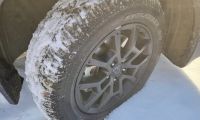This guide is for owners of relatively new vehicles who are new to car ownership. In this story, we will focus mainly on how to get the most and pay the least for your car's service needs. Of course, if you can do the job yourself, for less than the cost of your time and materials, that is a way to save some money. Also, if your car is an older model, a dealership may not be your best choice. A local trusted mechanic may offer you the best value. But that mechanic won't perform warranty repairs on your vehicle, and they may also not perform your state's required annual inspections. Here is our guide on how to get the work you need done without paying more.

Know What You Bought
When you purchased your vehicle new, it came with a warranty. That warranty has nothing to do with the regular maintenance and repairs vehicles need. Rather, it covers defects and problems that come up while the warranty is in effect. The cost to perform normal routine maintenance is not part of any warranty.
However, almost all dealerships of all brands will offer to sell you a maintenance package. For example, Nissan's is called Security+Plus. If you opted to purchase such a plan, read it to understand what you bought. Be sure you keep the paperwork handy at home as well as a copy of your plan in the glove box. Tell your dealership customer service person about it on the phone when you call to schedule service.
Some brands, like Toyota and Hyundai, include maintenance for a set period of time. You pay for that in the vehicle's purchase price. Be sure you know what that included maintenance covers. For example, Toyota's included maintenance lasts about 2 years. Hyundai's included maintenance lasts about three years.

Know What You Need
The time to determine what normal maintenance your car needs is before you plan the visit. Your owner's manual will have an insert or additional booklet that describes the maintenance needs and the schedule. Your car may also have a reminder built-in that alerts you to a needed service. Most vehicles in normal use fall under the "severe duty" schedule. If you have any questions about what is needed, phone the dealership and have that conversation at your leisure. Not when you are in a hurry at the service desk.
Plan Ahead
Your time is valuable, so make the most of it. Before you head to a dealership for service call ahead, or use an online tool and schedule an appointment that will work for you. If the service will take more than an hour or two, or if a warranty repair will be completed, most dealerships offer loaner vehicles. If they are not offered, plan your Uber ride.
This is also a great time to check your state inspection sticker (if your state requires one). Almost all dealerships offer to conduct these inspections for the state-imposed fee. Why not kill two birds with one stone?
Bring Your Paperwork and Your e-Reader
Your dealership's service department needs your printed vehicle registration to conduct a state inspection. Be sure you have it at the ready. If you are planning to stay while your work is done, have your e-reader, Chromebook, and headphones with you. Dealership waiting areas often have annoying network TV playing. Be ready to entertain yourself.
What To Expect When You Arrive
When you arrive, a service person will greet you. The dealership should be expecting you and have your paperwork ready. A customer service person will go over the work you need done and will ask you to sign a work order. This is normal. Since you already discussed what work is to be done, you won't have to debate the "special deal" on alignment or other unnecessary work.
Be Prepared For the New Vehicle Upsell
During your visit, don't be surprised if an employee of the dealership stops by to speak with you about "buying your car." They will tell you that your particular model and year is of great value to them as a used car (which is true). And that they could make you a great deal if you traded it in for a new vehicle. This is a standard part of dealership selling. If you are not ready to trade, politely say "No thank you," and then replace those headphones.
Be Prepared For Suggestions You Don't Need
All dealerships do a free multi-point inspection for you. What swell folks they are! They are doing it to measure the treadwear of your tires, the thickness of your brake pads, and the power of your battery. So that they can sell you on new tires, brakes, and a battery. Unless they are at the end of the useful life and won't make it until your next visit in six months, defer that work.

If your vehicle is in need of a fluid exchange do only what the manual requires. For example, if drain and replace the transmission fluid is called for in the manual, do that. Don't fall for the upsell of a "full flush." The dealership will have a neat demo on the desk with three colors of fluids. The worst looking one will be what the manufacturer requires. The great-looking stuff is the expensive service not required for your vehicle to maintain its working order.
If your dealership offers to replace the air in your tires with nitrogen say "no thank you.: Nitrogen has zero benefits in passenger vehicle tires and if the manufacturer did not ship you a car with nitrogen or state that it is required in the manual it is not helpful. All the claims made by the nitrogen sellers are based on flawed science or malarkey (trust this mechanical engineer).
Before You Leave
Once your car is finished, be sure to relocate some tings. First, that registration. Is it back in the spot you left it? Next up, your wheel locks. If your car has them, see that the lock is placed back in its spot with your own eyes before leaving. Finally, if you had an oil change, pull the dipstick and see that the new oil is back in the vehicle. It should be almost clear, not black. If there is no oil on the stick ask for help before you start it.
A Note About "Hourly Rates"
One way all service shops charge you is an "hourly rate." This number can be surprisingly high. Close to $100 in some cases. Remember that this number is not the hourly pay of the person turning the wrench in the shop. It is the total cost to run that business and employ and insure the person in the shop plus a profit that allows the dealership to continue operating successfully after taxes.
Taking a car in for service is often stressful. Know what you bought, plan ahead, and be ready on the day the service is to be done and your day will go much more smoothly.
John Goreham is a life-long car nut and recovering engineer. John's focus areas are technology, safety, and green vehicles. In the 1990s, he was part of a team that built a solar-electric vehicle from scratch. His was the role of battery thermal control designer. For 20 years he applied his engineering and sales talents in the high tech world and published numerous articles in technical journals such as Chemical Processing Magazine. In 2008 he retired from that career and dedicated himself to chasing his dream of being an auto writer. In addition to Torque News, John's work has appeared in print in dozens of American newspapers and he provides reviews to many vehicle shopping sites. You can follow John on Twitter, and view his credentials at Linkedin.
Image notes: Images courtesy of Nissan media support.











